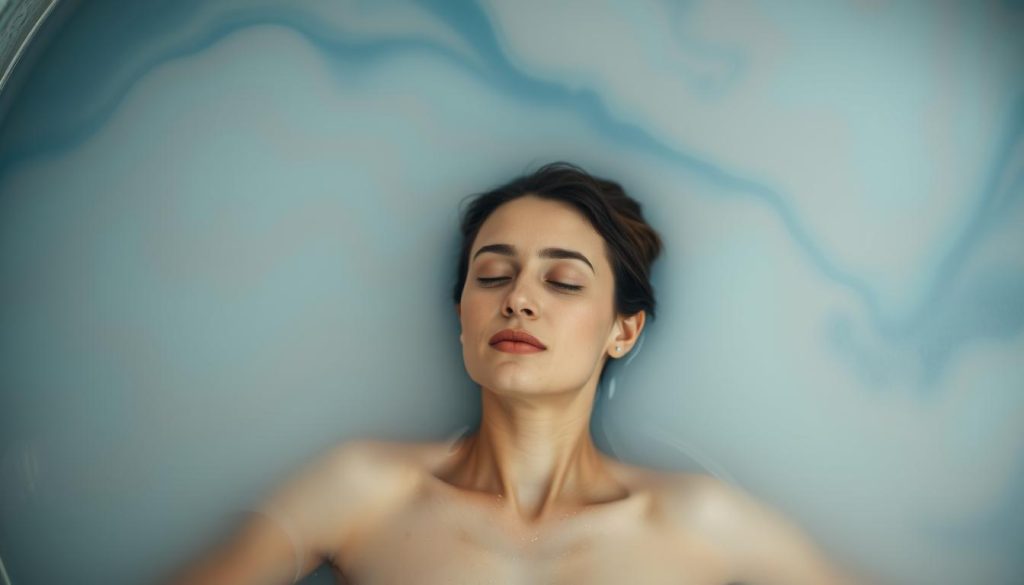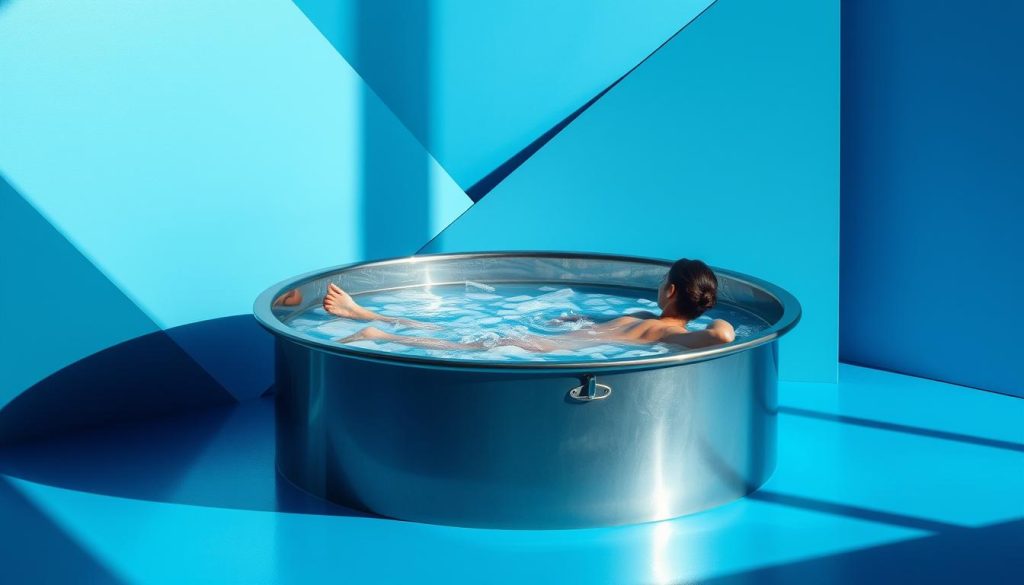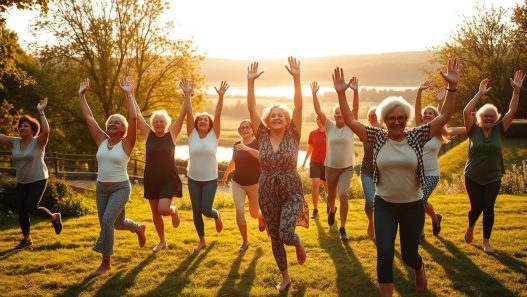More than 500 million views have gathered under the #coldplunge tag on TikTok, a sign that a chilly immersion practice has captured huge attention.
This cold water practice traces back to ancient Rome, yet today its rise is fueled by short, dramatic clips on social platforms. Clinicians like Troy Russell, M.D. and Craig Van Dien, M.D. say interest now extends beyond athletes into everyday people.
We will outline what clinicians and researchers say so you can tell hype from evidence. Early findings show the most consistent support for reduced post-exercise muscle soreness. Evidence for mood and anxiety changes is mixed and often short lived.
Safety matters: cold exposure stresses the body, so risks and who should avoid this practice are key topics ahead. You will also get practical tips on temperatures, timing, and how to begin safely.
Key Takeaways
- Hashtag interest on social media reached half a billion views, driving curiosity.
- Longstanding tradition meets modern clips; history and hype overlap.
- Experts note clear benefit for post-workout soreness; mood effects are variable.
- Safety and proper start-up steps are essential for most people.
- This article will balance upbeat anecdotes and current scientific limits.
Why Cold Plunges Are Everywhere Right Now
Short, dramatic clips and celebrity posts have turned icy immersion into a mainstream spectacle. Visual reactions — a gasp, a shout, a calm breath — play well on social media and help media outlets pick up the story.
From Polar Bear Dips to TikTok: How social media fueled the boom
Annual Polar Bear Dips have drawn crowds for over a century, and that ritual now meshes with viral clips. Influencers and stars such as Drake, Justin Bieber, and Joe Rogan have shared moments that normalize cold plunges for everyday people beyond athletes.
Ancient roots to modern wellness: A brief history of immersion
Practices that use ice or brisk water for health date back to ancient societies. Today, gyms, spas, and studios package the experience as accessible therapy and a group event.
- Platforms reward dramatic cold shock reactions, which speeds adoption.
- Social content reframes seasonal rites into daily self-care routines.
- That buzz can outpace evidence, so scientific scrutiny remains essential.
Expert Roundup: What Clinicians and Researchers Really Say
Experts weigh the evidence, separating clear recovery wins from overblown health claims. This section summarizes clinical and lab viewpoints so you can see what is plausible versus aspirational.
Post-workout recovery and muscle soreness
Rehabilitation specialist Craig Van Dien, M.D., notes that cold water immersion often helps athletes reduce muscle soreness after intense sessions.
That effect is one of the clearest practical benefits and is supported by targeted research.
Mood, alertness, and neurotransmitters
Kinesiologist John Holash reports spikes in norepinephrine and dopamine after short immersion. These level rises can boost alertness and improve mood for hours.
Healthy user bias and study limitations
Many studies use fit participants, which skews results. Small sample sizes and differing methods make outcomes variable.
Who should avoid exposure
Clinicians advise that people with cardiac or pulmonary issues, and many older adults, seek medical clearance before trying a plunge.
- Consensus: plausible benefits for recovery; mixed evidence for broader health gains.
- Neurochemistry: short-term mood and alertness changes are documented.
- Limits: long-term clinical implications remain uncertain.
| Effect | Evidence Level | Who May Benefit |
|---|---|---|
| Reduced muscle soreness | Moderate | Athletes, active people |
| Short-term mood boost | Limited | Those seeking alertness |
| Long-term health change | Insufficient | Unclear across participants |
The Science Behind Cold Water Immersion: Benefits, Mechanisms, and Evidence
Controlled immersion studies reveal patterns in timing, temperature, and bodily responses that guide practical use.
Temperature and timing: Many users target 38–60°F, but several studies point to roughly 50–59°F as most effective for reducing post-exercise muscle soreness. Short sessions, often under 10 minutes, and repeated frequency across a week appear more important than a single long soak.
Inflammation, circulation, and muscle recovery
Cold water immersion triggers vasoconstriction that shifts blood toward the core. This change can alter circulation and reduce swelling in strained muscle groups.
Evidence is strongest for short-term reductions in muscle soreness after exercise. Claims about systemic inflammation or lasting immune gains remain inconclusive in current studies.
Metabolism, brown fat, and glycemic control
Research on metabolic effects and brown fat activation is mixed. Some trials report modest changes in blood glucose or fat activity, while others find no clear benefit.
Overall, benefits for metabolism are still emerging and likely depend on protocol, frequency, and individual factors.
| Area | Evidence | Practical note |
|---|---|---|
| Muscle soreness | Moderate | 50–59°F, short sessions, repeat weekly |
| Circulation shifts | Well understood | Vasoconstriction then reflow; aids perceived recovery |
| Metabolic effects | Mixed | Variable findings; not a reliable weight tool |
Takeaway: Start conservative, keep sessions short, and track your response. Too-cold or too-long exposures raise risk, so prioritize gradual ramps and consistent frequency over extremes.
Cold Plunging for Anxiety: The Viral Wellness Trend with Real Science Behind It
Small clinical studies hint that short immersion sessions can ease negative mood in some participants.

What trials show and where evidence stops
A handful of studies report reduced negative mood and higher wellbeing after open water outings. One clinical trial is now testing sea swimming for depression anxiety and tracking inflammatory markers.
Most research uses small samples and mixed methods. That means results are promising but far from definitive for major depression.
Why some people feel better
Possible pathways: short immersion may alter inflammatory signals and neurotransmitters tied to mood. These shifts could produce brief relief in anxiety and depression symptoms.
Context matters
Nature, light activity, and group support often accompany cold water swimming. Those factors can boost mood independently of temperature.
- Try short, safe sessions and pair them with walking or social time.
- Journal mood before and after to track lasting change.
- Discuss plans with a clinician if you are managing depression or anxiety or are in therapy.
| Outcome | Evidence | Practical note |
|---|---|---|
| Short-term mood lift | Limited | May last hours; monitor over weeks |
| Reduced stress scores | Low quality | Often mixed with nature and activity |
| Clinical depression change | Insufficient | Not a replacement for therapy |
Safety First: Risks, Contraindications, and How to Reduce Them
Brief exposures can still trigger intense physiological reactions, so caution is essential.
Recognizing early warning signs
Cold shock can cause involuntary gasps and very fast breathing within seconds. That response can spike heart rate and raise blood pressure, impairing judgment near water.
Physical incapacitation follows if the body stays too long. Hands and feet grow numb, grip weakens, and coordination slips. That loss of control raises drowning risk quickly.
Why medical clearance and supervision matter
People with cardiovascular or pulmonary disease and many older adults face higher risk from abrupt cold exposure. Sudden heart rate shifts can strain the heart and change blood flow.
Never go alone. Always have a companion, a warm exit plan, and rapid rewarming gear. Supervision reduces danger and speed of response if you feel dizzy or out of control.
Practical harm-reduction steps
- Start warmer and shorter; increase time only as your body adapts.
- Monitor breathing and end the session if dizziness or numbness appears.
- Keep immersion under tight control: limit minutes and watch temperature closely.
- Seek medical advice before trying this if you have health concerns.
| Risk | Typical trigger | Practical mitigation |
|---|---|---|
| Cold shock / rapid breathing | Water under ~50–60°F | Slow entry, breathing control, buddy present |
| Physical incapacitation | Prolonged exposure | Short sessions, warm exit plan, reheating gear |
| Hypothermia / core cooling | Minutes in water below 70°F | Limit time, monitor temperature, dry clothing and warmth |
How to Start Cold Plunging the Smart Way
Start simple: a short, controlled immersion beats dramatic stunts every time. Begin with a manageable water temperature and keep your first plunge to roughly two to three minutes. Practice steady nasal inhales and long exhales to help your nervous system stay calm.

Beginner protocol
Gradual exposure matters. Aim for two to three minutes and stop if your heart rate climbs or your breathing won’t settle.
Where to plunge
Tubs and tanks give precise control over temperature and timing. Showers and home baths are cheap and convenient, and work well for early sessions.
Open water offers a powerful experience but adds currents, weather, and safety variables. Spas add comfort, but no single location shows clear superiority in research.
Building a routine
Favor frequency over long single sessions. Short, repeat plunges across the week often produce better results than one long soak.
Log temperature, minutes, sleep, and perceived recovery to find what helps you. Stop or back off if coordination, clarity, or intense shivering appear.
- Practical tips: know your exit, have warm clothes ready, and avoid pushing past chest tightness.
- Use posture and breath for control: enter slowly, shoulders relaxed, focus on lengthening exhales.
- Athletes should schedule immersion away from key hypertrophy work and test on low-stakes days first.
| Setup | Pros | Trade-offs |
|---|---|---|
| Home tubs / tanks | Control, privacy | Cost, setup time |
| Showers / baths | Accessible, low cost | Less precise temperature control |
| Open water | Natural setting, social | Weather, currents, safety risks |
Conclusion
When done safely and often, brief water immersion can ease muscle soreness and sharpen focus.
Cold plunging shows the clearest health benefits for post-workout recovery. Short sessions signal changes in neurotransmitter levels that can lift mood and alertness for hours.
Respect the stressor: abrupt exposure can trigger gasping, fast heart rate, or loss of coordination. People with heart or lung conditions and older adults should seek medical clearance.
Favor short, regular sessions over extremes. A home shower or bath can act as a practical entry point. Never do a plunge alone and track how your body and sleep respond.
Bottom line: try measured immersion for recovery and clarity, watch safety, and let emerging research guide bigger claims.






